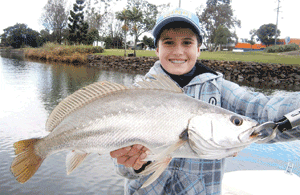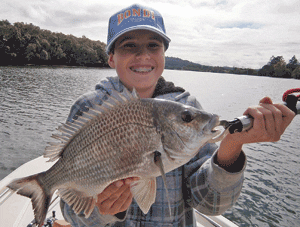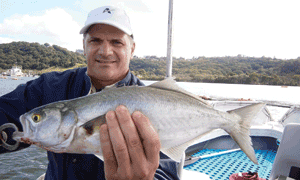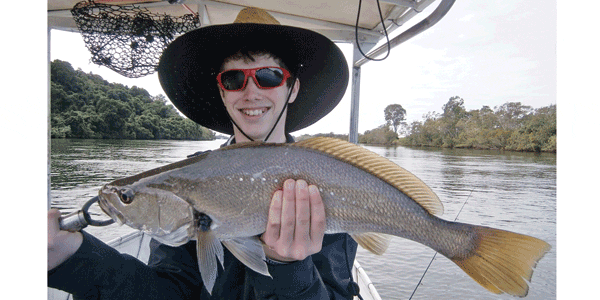The mass explosion of this species is due to the record amounts of rain and flooding we received at the beginning of the year, which flushed out huge numbers of bream from the big rivers in the south.
These fish then migrated along the coastline and re-entered the rivers to spawn during the weeks leading up to the new and full moons.
I expect a good bream bite during August on the same moon phases but probably with a lower level of activity than we saw through May and June. Bream will definitely remain a target species however.
The river mouths will be the areas to look for bream, as will any heavily structured or deep holes in the vicinity of the river mouths.
Yabbies, whitebait and fresh cut baits will work well, as will small soft plastics and blades. Luderick is another species that has been in record numbers over the past few months, and I expect these fish will make their presence felt along the rock walls in the lower reaches of rivers this month.
Luderick are most commonly targeted with a well-weighted float and green or cabbage weed for bait, but on most trips I have been catching them along the walls with blades. A small band of anglers has had great results on this species in the Tweed River while using fly gear. These anglers tie green flies to look like the weed that bait anglers traditionally use.
The local lads reckon luderick pull like trains on light fly equipment and I have no doubt about that. I will try to find some time between charters to have a go myself.



Anglers who like to use bait should use either white or frogmouth pilchards.Metal spinners cast and retrieved through the schools will work well for lure fishers. Another option for the lure anglers is to troll small hard-bodied minnows around the surface activity.
Though in some cases, trolling will allow you to find the tailor that might be holding in deeper water too.
I sometimes troll a combination of deep and shallow-running minnows to cover the depths where the bait and tailor might be suspending.
Jewfish is another target species this month and you are best off looking for them in the deepest holes through the rivers on the tide changes. Use live herring, soft plastics and blades to entice them.
Take your time to sound around the deep holes before fishing because jewfish mark up beautifully on your sounder screen and locating them first will save time and obviously increase your chances of success. Last month I mentioned some anglers don’t regard the colder months as being conducive to good flathead fishing, however I have always found the opposite, with great flathead numbers if you know where to locate them.
Unlike the spring and summer months when flatties seem to congregate in the mid to lower reaches of the rivers, through winter the big concentrations hold in the upper reaches. I start my flathead campaign in the middle reaches but usually find that the farther upstream I travel the better it gets. Trolling minnow lures on the trip upstream is the best way to locate them. Once I find where the concentrations are holding I start mixing it up a bit by casting soft plastics and blades.
 Bush ‘n Beach Fishing Magazine Location reports & tips for fishing, boating, camping, kayaking, 4WDing in Queensland and Northern NSW
Bush ‘n Beach Fishing Magazine Location reports & tips for fishing, boating, camping, kayaking, 4WDing in Queensland and Northern NSW









